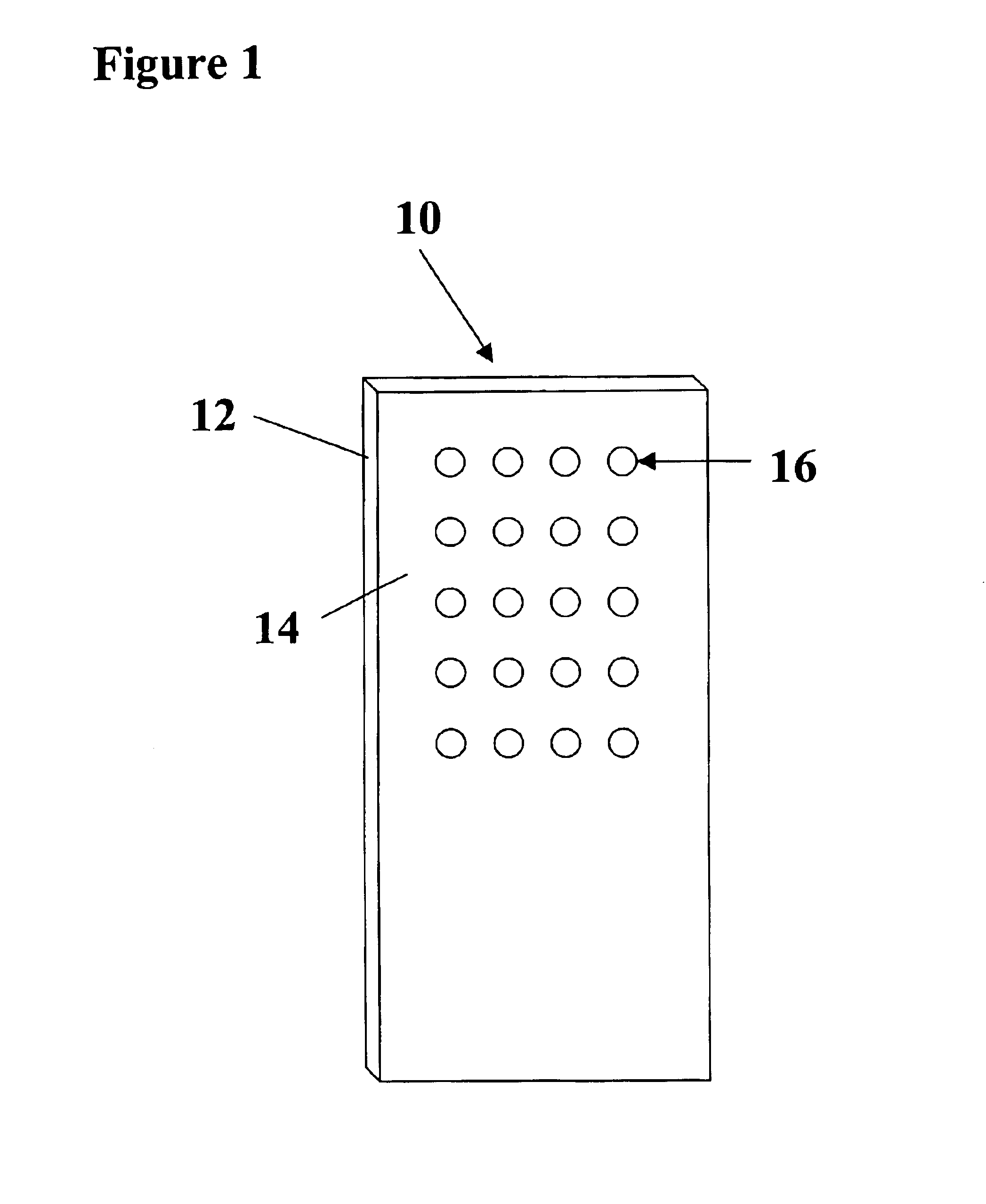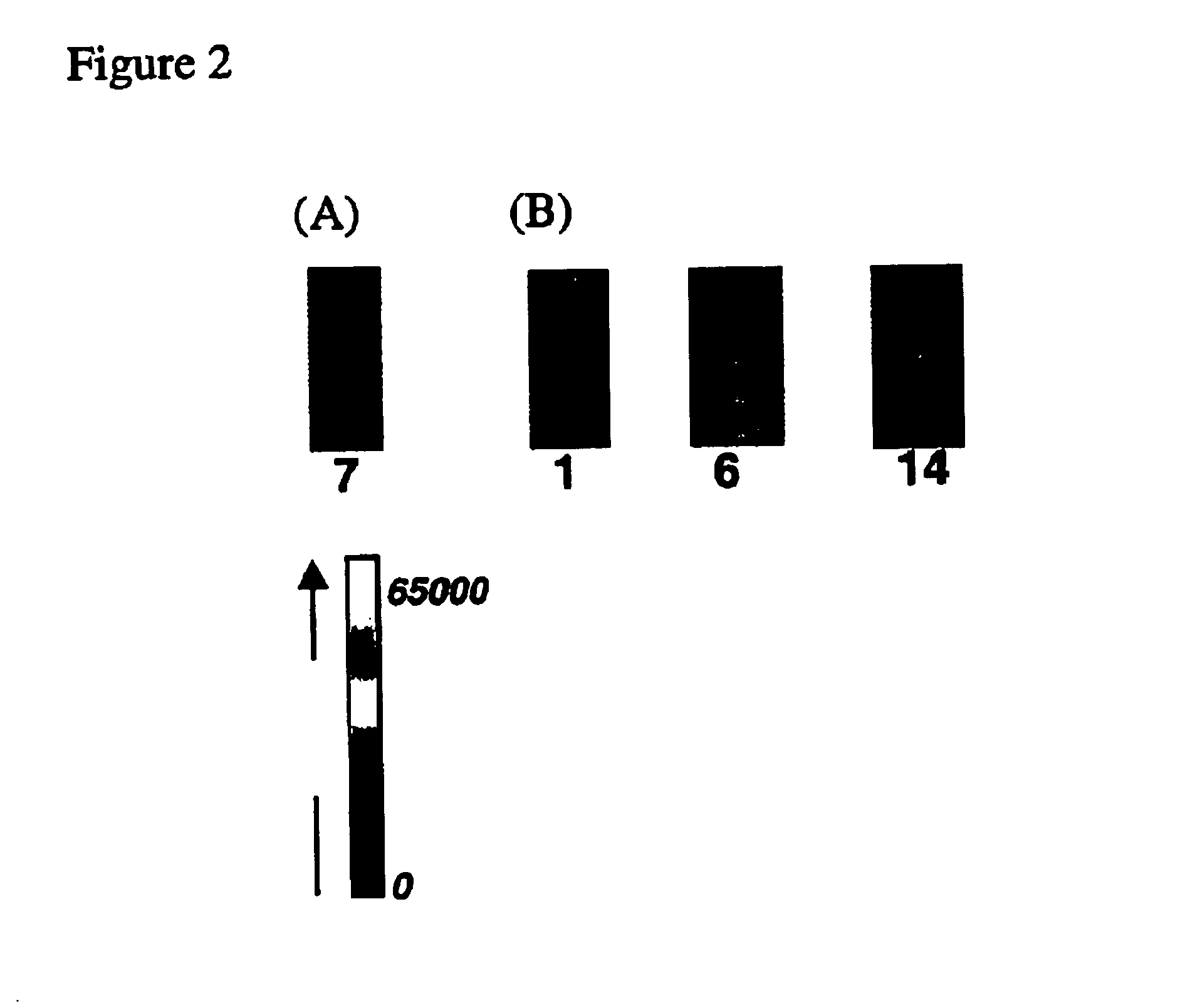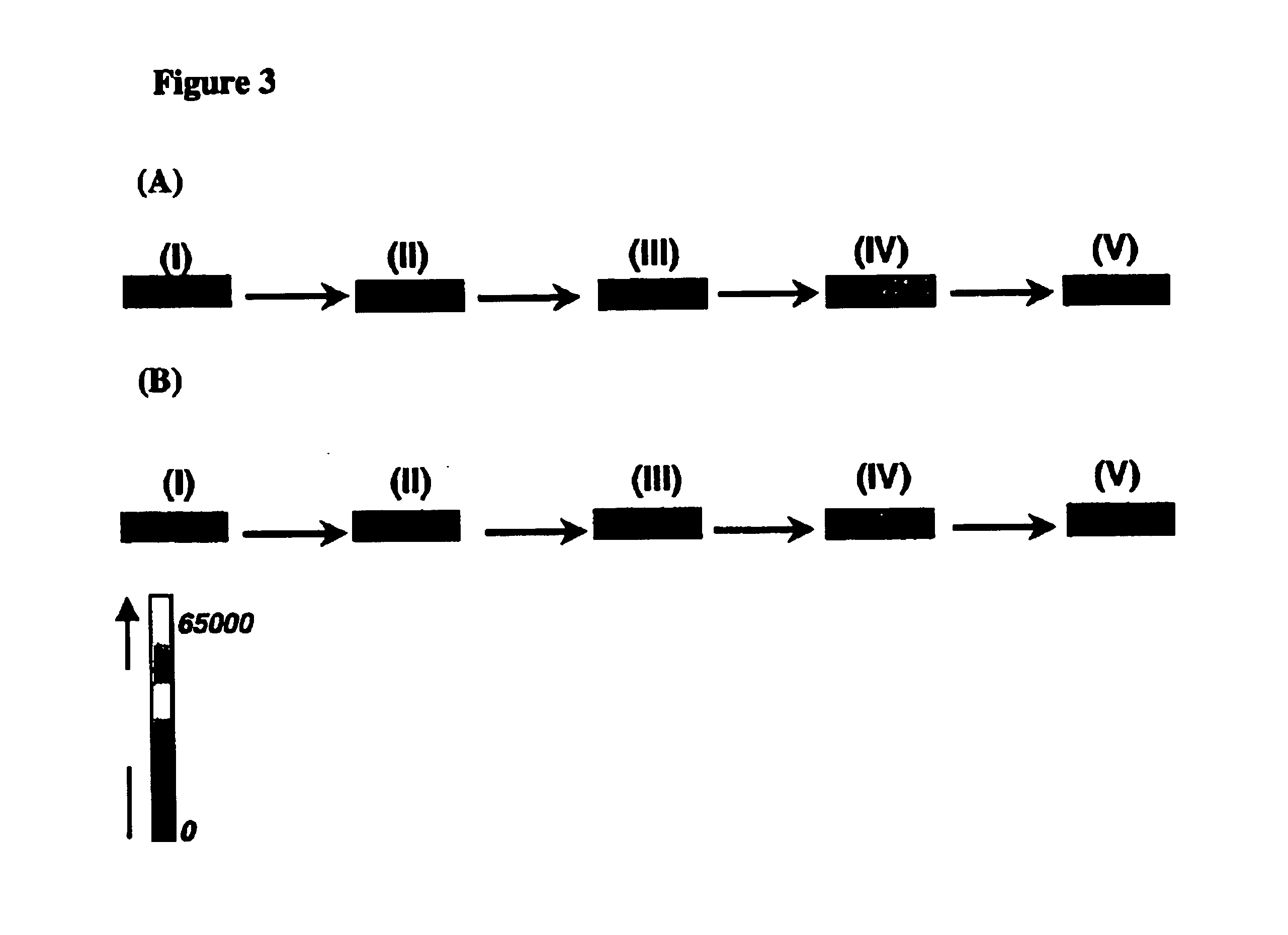Arrays of biological membranes and methods and use thereof
a biological membrane and array technology, applied in the field of arrays of biological membranes, can solve the problems of difficult protein array fabrication, cumbersome methods, and require the fabrication of patterned surfaces, and achieve the effect of enhancing the affinity of biological membrane microspots for substrates
- Summary
- Abstract
- Description
- Claims
- Application Information
AI Technical Summary
Benefits of technology
Problems solved by technology
Method used
Image
Examples
examples
Materials
[0077]Membrane preparations of human β-adrenergic receptor subtype I (β1) and dopamine receptor subtype I (D1) were purchased from Biosignal Packard (Montreal, Canada). These receptor-associated membranes came suspended in a buffer solution containing 10 mM Tris-HCl, pH 7.4 and 10% glycerol. Human cloned neurotensin receptor subtype 1 (NT1R) and BODIPY-TMR-neurotensin (BT-NT) were purchased from Perkin Elmer Life Science (Boston, Mass.) and were received as membrane associated suspensions in a buffer solution containing 10 mM Tris-HCl (pH 7.4) and 10% sucrose. BODIPY-TMR-CGP12177 (BT-CGP) and BODIPY-FL-SCH23390 (BF-SCH) were purchased from Molecular Probes (Eugene, OR). CGP12177 and SCH23390 were purchased from Tocris Cookson, Inc (Ballwin, MO). Neurotensin was purchased from Sigma Chemical Co. (St. Louis, MO). Corning CMT-GAPS slides were used as received. Brij 76 derivatized gold-coated substrates were prepared as described previously. The fluorescently labeled (“hot”) li...
PUM
 Login to View More
Login to View More Abstract
Description
Claims
Application Information
 Login to View More
Login to View More - R&D
- Intellectual Property
- Life Sciences
- Materials
- Tech Scout
- Unparalleled Data Quality
- Higher Quality Content
- 60% Fewer Hallucinations
Browse by: Latest US Patents, China's latest patents, Technical Efficacy Thesaurus, Application Domain, Technology Topic, Popular Technical Reports.
© 2025 PatSnap. All rights reserved.Legal|Privacy policy|Modern Slavery Act Transparency Statement|Sitemap|About US| Contact US: help@patsnap.com



